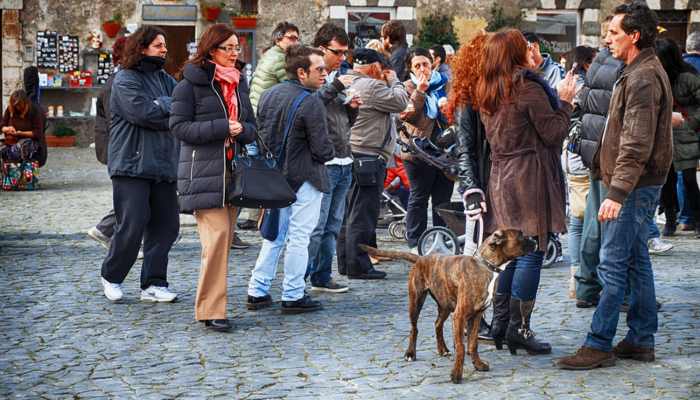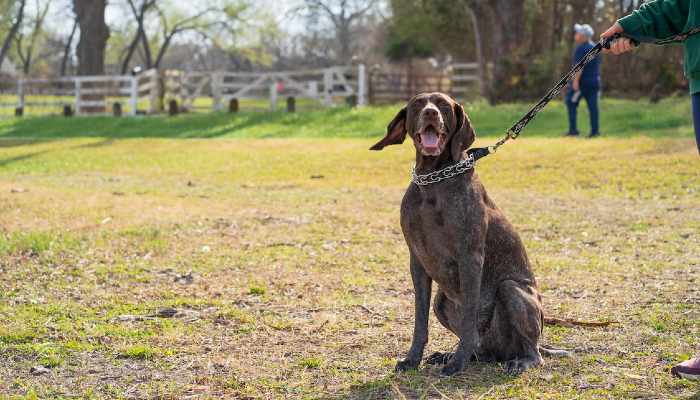Walking is a great way to get some exercise and bond with your pup, but it can also be a bit of a challenge in an urban setting. There are a lot of potential hazards to be aware of, from busy streets and sidewalks to unfamiliar dogs and people. Here, we’ll explore some tips for staying safe while walking your dog in an urban area.
1. Importance of obedience training for urban dog walking
Obedience training is an important aspect of responsible dog ownership and can bring numerous benefits for both the dog and the owner. It helps to establish limits and clear communication for the dog, which can lessen tension and anxiety. Besides, it can stop accidents from happening, like a child running off and into the street, and can aid in the prevention of behavioural problems like excessive barking or jumping, which can be crucial in urban settings where available space and noise levels may be constrained.
Obedience training may be a fun and rewarding experience for the owner. It supports the development of confidence and trust in the partnership between the both of you. Furthermore it can assist to avoid problems with other people and dogs and make it simpler to take the dog out in public. The health and security of both the dog and the owner can be improved by obedience training. Although starting young can make the process easier, it can be done at any age. It is crucial to employ positive reinforcement strategies throughout training sessions, such as snacks and praise. Both the dog and the owner can benefit from a well-trained and obedient dog with persistence and commitment.
2. Tips for training your dog to obey on a walk
– Start with basic commands: Before heading out on a walk in the city, make sure your dog is proficient in basic obedience commands such as “sit,” “stay,” and “heel.” Practice these commands in a controlled environment, such as your backyard or a quiet park, before attempting them on a walk.
– Use positive reinforcement: Rewarding your dog for good behaviour is an effective way to encourage obedience. Bring treats and praise on your walks and reward your dog for following commands and behaving well. Avoid using punishment or negative reinforcement, as these can be counterproductive and may cause your dog to become anxious or fearful.
– Gradually increase the difficulty: Once your dog is familiar with fundamental obedience commands, progressively raise the complexity by introducing distractions. Introduce more distractions, such as other people or animals, gradually after starting with quiet, controlled walks. As a result, your dog will gain self-assurance and improve their ability to concentrate on you despite distractions.
– Keep your dog on a leash: It’s crucial to keep your dog on a leash while walking in urban areas, for both your safety and the safety of other people. Keep the leash at a manageable length to maintain control, and use a leash that is suitable for your dog’s size and strength. Use a harness or head collar to help you keep control if your dog tends to pull or has a strong prey drive.
– Practice, practice, practice: Training your dog to obey on a walk takes time and patience. Be consistent in your training efforts and make sure to practice regularly. You may also want to consider enlisting the help of a professional dog trainer or taking a obedience training class. With dedication and persistence, you and your dog can enjoy the benefits of well-behaved walks.
3. Common challenges and how to handle them
– Leash pulling: This is one of the most frequent problems with dog walking, which can be upsetting for the owner and sometimes harmful to the dog. Teach your dog to walk on a loose leash in order to reduce leash pulling. Start off by using a harness or head collar, which can help to more evenly distribute the pressure and help you keep control. Then, try to train your dog to concentrate on you rather than tug in the direction of a distraction. Give your dog treats and praise as positive reinforcement methods to encourage peaceful leash walking.
– Distraction: Dogs can be easily distracted while out on a walk, especially those with high levels of activity or a strong hunting drive. It’s crucial to teach your dog to concentrate on you and ignore distractions so that they don’t cause issues. To accomplish this, train your dog to obey you and use instructions like “sit” and “stay” to draw their focus back to you. You may also try rewarding your dog with treats when they ignore distractions and concentrate on you.
– Noise: Some canines may find the chaos and noise of urban settings to be overpowering. There are a few things you can do if your dog is easily distracted or is sensitive to noise. Your dog can become accustomed to loud noises at home by wearing earplugs or using a white noise machine. To lessen the amount of noise your dog is exposed to, you may also consider going for a walk during off-peak hours or in quieter regions.
– Aggression: Some dogs may become aggressive towards other people or animals on a city walk. This can be a serious safety concern and should be addressed immediately. If your dog is showing aggressive behaviour, it is important to seek the help of a professional dog trainer or behaviourist to determine the cause of the aggression and develop a plan to address it.
– Anxiety: Be prepared for encounters with other dogs and people. If you encounter a person or dog that makes you feel uncomfortable, cross the street or take a different route. It’s better to be safe than sorry.
4. Safety considerations for urban dog walking
Walking a dog in the city can be a fun and delightful activity, but it’s crucial to consider your safety. When taking your canine companion for a stroll in a city, keep the following safety tips in mind:
– Keep your dog on a leash: To protect both your dog and other people, it’s crucial to keep your dog on a leash while walking in urban areas. Leashes can help to prevent disputes with other people or animals as well as your dog from fleeing into the street or becoming lost. If you are certain that your dog is well-trained and able to respond to a call, only allow it off the leash in authorised off-leash locations.
– Be aware of your surroundings: Keep an eye out for any potential dangers, such as traffic or construction, and pay attention to your surroundings.
Keep a safe distance from moving cars and steer clear of any situations that could be harmful to your dog, like regions with poisonous spills or sharp items.
– Keep your dog up to date on its vaccinations: To protect your dog from illnesses and parasites, it’s essential to keep up with vaccines. Your dog may be exposed to a wider range of animals and habitats in metropolitan settings, which can raise the risk of exposure to disease. To decide on the right immunisation plan for your dog, speak with your vet.
– Use preventative measures: There are other preventative steps you may take in addition to vaccination to safeguard your dog’s health when out for a walk. For instance, to protect your dog from parasites, use a flea and tick prevention product, and if you think that your area might be infected, use a heartworm preventive prescription.
Consider the weather
Weather is an important aspect of your walk. It’s always recommended to check the weather for you and your dog’s comfort when you’re out walking. If it’s hot outside, try to walk your dog in the morning or evening when it’s cooler, and bring water for both of you to stay hydrated. If it’s cold or snowy, dress your dog in a coat or sweater to keep them warm, and be mindful of any potential hazards like ice or slippery surfaces.
– Rain: Some dogs enjoy the rain, but it’s vital to take your dog’s breed and age into account when considering whether to go for a walk in the rain. Pugs and bulldogs are two breeds of dogs that may be more susceptible to respiratory issues and shouldn’t go for walks in torrential downpour. Additionally, older dogs could be more sensitive to the cold and the rain. Make sure your dog is wearing a waterproof coat and bring a towel to dry off if you do decide to walk in the rain, and be mindful of any potential hazards like ice or slippery surfaces.
– Cold: The skin and paws of your dog can suffer in the cold weather. Use paw balm or wax to keep your dog’s paws from breaking, and think about using booties to guard against ice, snow, and salt. Keep your dog’s coat well-groomed to provide as additional insulation, and if your dog has short hair or is prone to becoming chilly, think about using a coat or sweater.
– Heat: During hot weather, it’s important to protect your dog from overheating, urban areas generally have fewer trees and less foliage, which can lead to fewer shadows than in more natural environments like forests. Avoid walking during the hottest part of the day, try the mornings or evenings only, and stick to shaded areas when possible. Make sure your dog has access to plenty of water, and consider using a cooling pad or misting your dog with water to help keep it cool. If your dog is panting heavily or showing signs of distress, take a break in the shade and possibly shorten the stroll.
In conclusion, with good training, obedience, and awareness for potential difficulties and safety considerations, walking a dog in an urban setting can be both a fun and safe activity. Establishing clear boundaries and lines of communication can assist to lower stress levels and prevent accidents. Maintaining your dog’s leash, being mindful of your surroundings, and keeping your dog’s immunisations and preventative care up to date are all crucial. You and your pet can take advantage of the many advantages of this gratifying pastime by adhering to these rules and being aware of the particular difficulties and safety concerns of urban dog walking.




